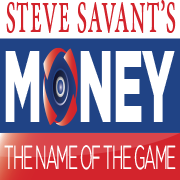 Mesa 4/25/2018 12:00:00 PM
Mesa 4/25/2018 12:00:00 PM
News / Finance
US & Foreign Indices
Index Investing is a Global Phenomenon

Morgan Stanley Capital International, known as MSCI, has developed one of the world’s most comprehensive indexing systems, tracking both developed and emerging securities markets in various geographic regions. The MSCI-EAFE is probably the best known, and the one against which US activity, as tracked by the S&P 500 and the MSCI Large Cap index, is most frequently compared. EAFE covers stock markets in Europe (E), Australasia (A), and the Far East (FE). As with other major indexes, there are both index funds and ETFs linked to the EAFE.
The comprehensive S&P Global Equity Index Series tracks global stock market performance with the S&P Global 1200 and its subsets, an ADR Index, and a range of thematic indexes. There are S&P indexes for Europe, Asia, and the Americas as well as a range of Shariah indexes. Standard & Poor’s also provides emerging market indexes, some developed with the International Finance Corporation, a division of the World Bank. These indexes provide bench- marks that investors can use to evaluate the performance of newer markets that are eager to attract international capital. Dow Jones Indexes track both country and world markets, including the Dow Jones China 88, Russian Titans 10, and the Euro STOXX 50.
In 1999, MSCI and Standard & Poor’s jointly developed the Global Industry Classification Standard (GICS) to establish a global standard for categorizing companies into sectors and industries based on their primary business activity.
The goal is to ensure that investors, asset managers, and investment researchers can make meaningful comparisons among the results that local, regional, and global indexes report. The two companies update the standard every year to keep the categories timely Among the lessons that indexes teach is how interconnected the world’s markets actually are. What happens in London and Toyko while US stock markets are closed—as reported by the FTSE and the Nikkei—often has a significant impact on the prices of futures contracts traded before the opening bell on the New York Stock Exchange (NYSE).
While the markets don’t march in lockstep, when the FTSE is down, prices for futures contracts on the S&P 500 and the DJIA are usually down as well. And if the FTSE is up, those futures prices are generally up. As the trading day develops, the expectation of gains or losses doesn’t always materialize. But it happens often enough to influence investor behavior.
Contributions from the book Index Investing in this press release are used with permission from Light Bulb Press.
